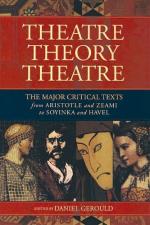|
This section contains 4,804 words (approx. 17 pages at 300 words per page) |

|
SOURCE: Brazell, Karen. “Zeami and Women in Love.” Literature East & West XVIII, no. 1 (March 1974): 8-18.
In the essay which follows, Brazell summarizes Zeami's portrayal of women in his plays, arguing that because his culture lacked a single model for women, he was freer to have his female characters depict a wide range of emotions.
One distinctive trait of Japanese Nō drama is its avoidance of highly individualized characterizations in favor of expressing powerful emotion. Hence the Nō theater relies on certain character types. In developing these types, it of course used images and ideals prevalent in the culture and in turn elaborated and influenced these ideals.
For Zeami (1363-1443), who brought Nō to perfection, and indeed for most of his contemporaries, the ideal man was a warrior who combined aesthetic sensitivity with martial valor and loyalty. By 1423, the date of his Nōsakusho (The Composition of Nō), Zeami...
|
This section contains 4,804 words (approx. 17 pages at 300 words per page) |

|


